If your like me, if you decide to make a gun with a French lock on it, you will find that Davis makes two, very similar locks.
These are about the size of the Davis Jaeger lock, and indeed, they use some common parts.
You will also be told by many that these locks are not"correct".
During the past year, whenever I would ask "what is correct", I usually got answers like "go get this book....."
TG recently posted a nice picture of the lock he has modified, but beyond this, information has been scant.
The following lock photos were borrowed from the following site:
http://home.cogeco.ca/~fleurdelys3/tullefusil.htm
The work is by Simon Gilbert
I hope these photos help those of you who are striving to modify your purchased locks.
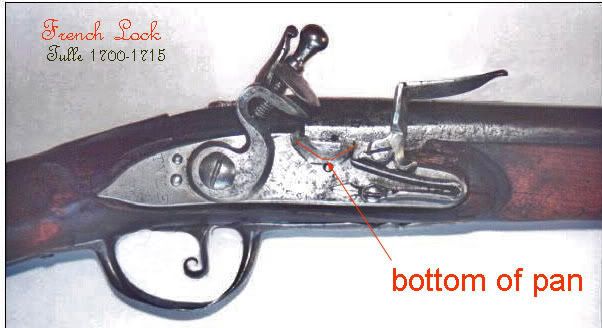
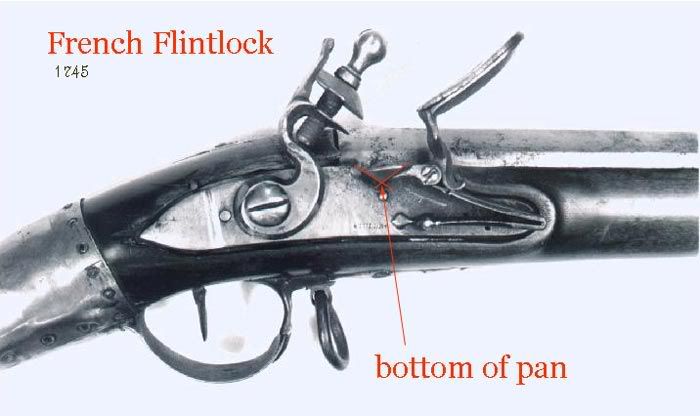
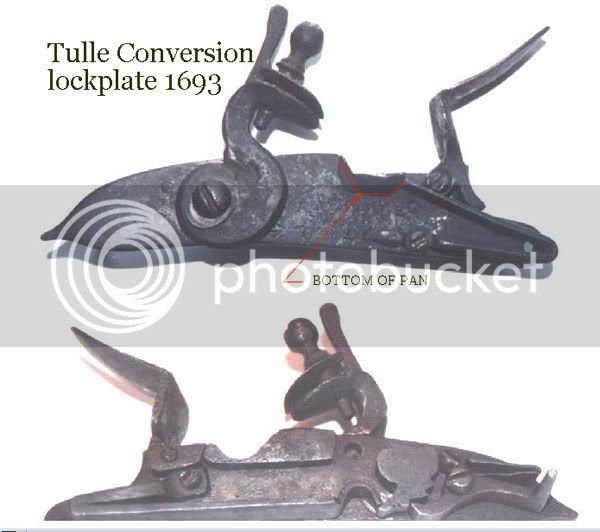
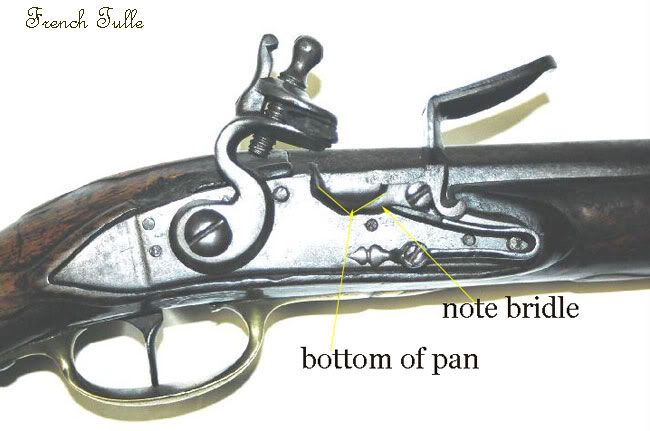
Below is a photo taken out of the Track of The Wolf Catalog showing the two versions of the Davis locks.
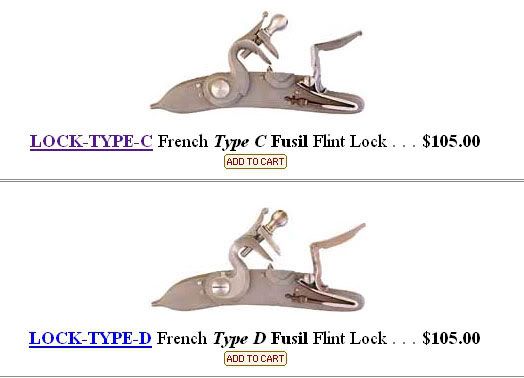
Comparing my Davis Fusil Type C lock with these photos of actual locks, the things that catch my eye are:
The size of the head of the Jaw Screw. Mine is much too large.
The area where the back of the upright area of the cock meets the lower area is too shallow. The cocks in the photos have a rather deeply cut area before the upright starts.
The Davis lock has a pronounced notch in the forward sweep at the lower part of the cock while the cock in the photos is a smooth transition.
I note in the TOTW photo, the Type D cock looks much more like the locks in the top photos.
The Toe or "stop" of the Frizzen of the Davis Lock has too much of a curl to it. Indeed, several of the locks in the photos have no curl at all.
The bottom of the pan on the Davis lock does not have the pronounced the triangular shape to it which I highlighted in the photos but it is close.
I did note that some of the locks shown do have a small flat on the bottom of the pan similar to the Davis lock.
Perhaps TG or some of the other knowledgable people on the forum can point out some of the other things I've overlooked
I am not smart enough to know if the Type C Davis lock represents a French Lock which did not appear in the website photos.
It may be entirely correct, but one thing I do know.
If you modify your lock to look like one of the ones in the above photos, no one can say "That's not correct".
These are about the size of the Davis Jaeger lock, and indeed, they use some common parts.
You will also be told by many that these locks are not"correct".
During the past year, whenever I would ask "what is correct", I usually got answers like "go get this book....."
TG recently posted a nice picture of the lock he has modified, but beyond this, information has been scant.
The following lock photos were borrowed from the following site:
http://home.cogeco.ca/~fleurdelys3/tullefusil.htm
The work is by Simon Gilbert
I hope these photos help those of you who are striving to modify your purchased locks.




Below is a photo taken out of the Track of The Wolf Catalog showing the two versions of the Davis locks.

Comparing my Davis Fusil Type C lock with these photos of actual locks, the things that catch my eye are:
The size of the head of the Jaw Screw. Mine is much too large.
The area where the back of the upright area of the cock meets the lower area is too shallow. The cocks in the photos have a rather deeply cut area before the upright starts.
The Davis lock has a pronounced notch in the forward sweep at the lower part of the cock while the cock in the photos is a smooth transition.
I note in the TOTW photo, the Type D cock looks much more like the locks in the top photos.
The Toe or "stop" of the Frizzen of the Davis Lock has too much of a curl to it. Indeed, several of the locks in the photos have no curl at all.
The bottom of the pan on the Davis lock does not have the pronounced the triangular shape to it which I highlighted in the photos but it is close.
I did note that some of the locks shown do have a small flat on the bottom of the pan similar to the Davis lock.
Perhaps TG or some of the other knowledgable people on the forum can point out some of the other things I've overlooked
I am not smart enough to know if the Type C Davis lock represents a French Lock which did not appear in the website photos.
It may be entirely correct, but one thing I do know.
If you modify your lock to look like one of the ones in the above photos, no one can say "That's not correct".





